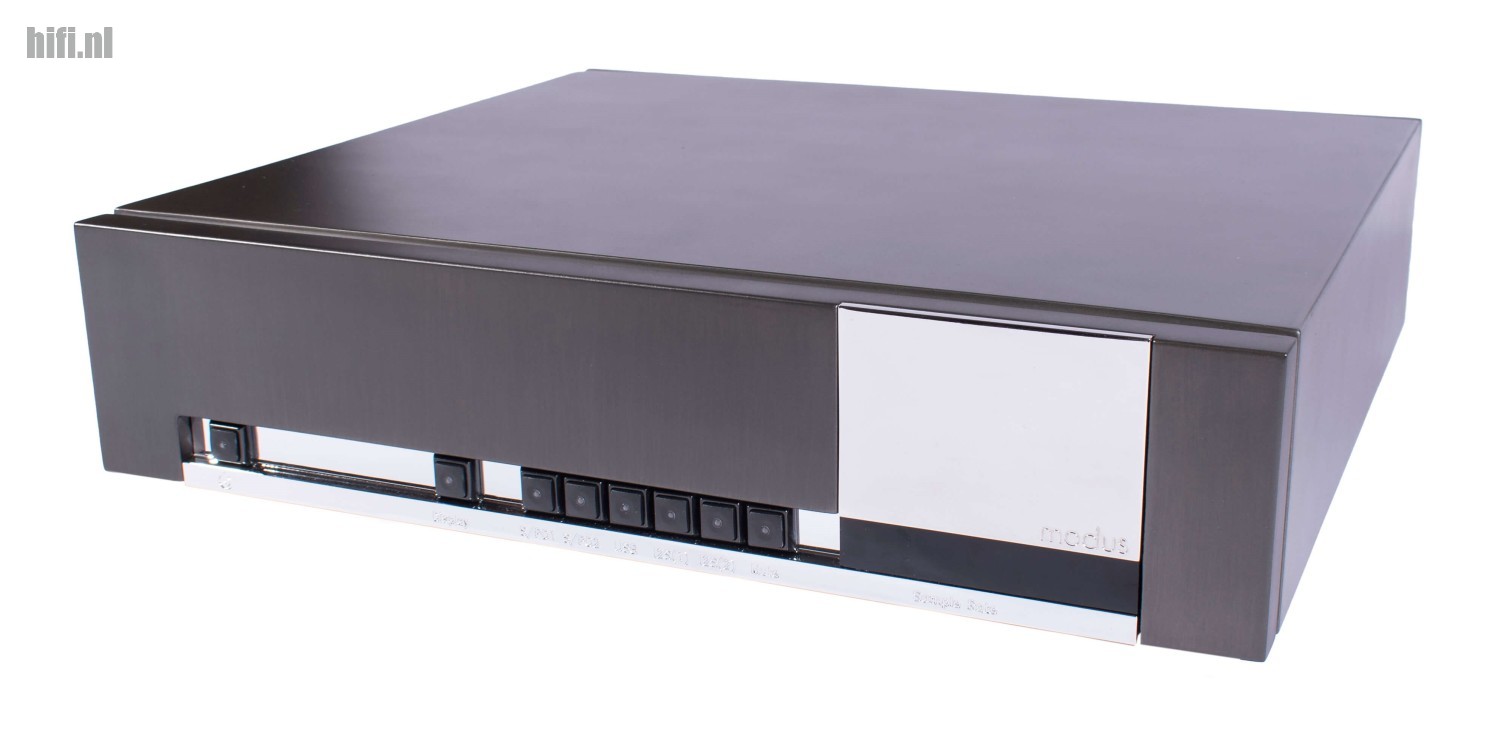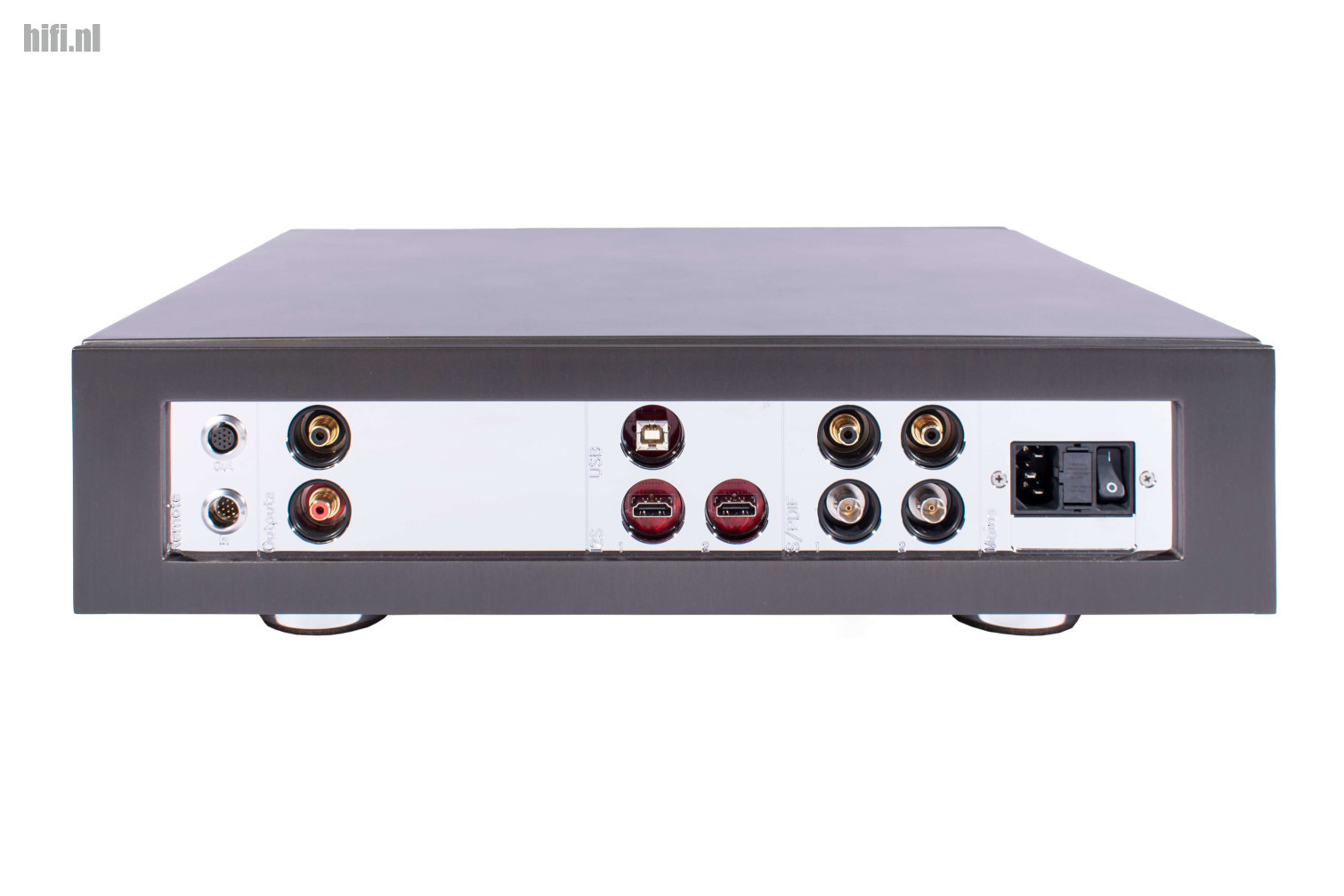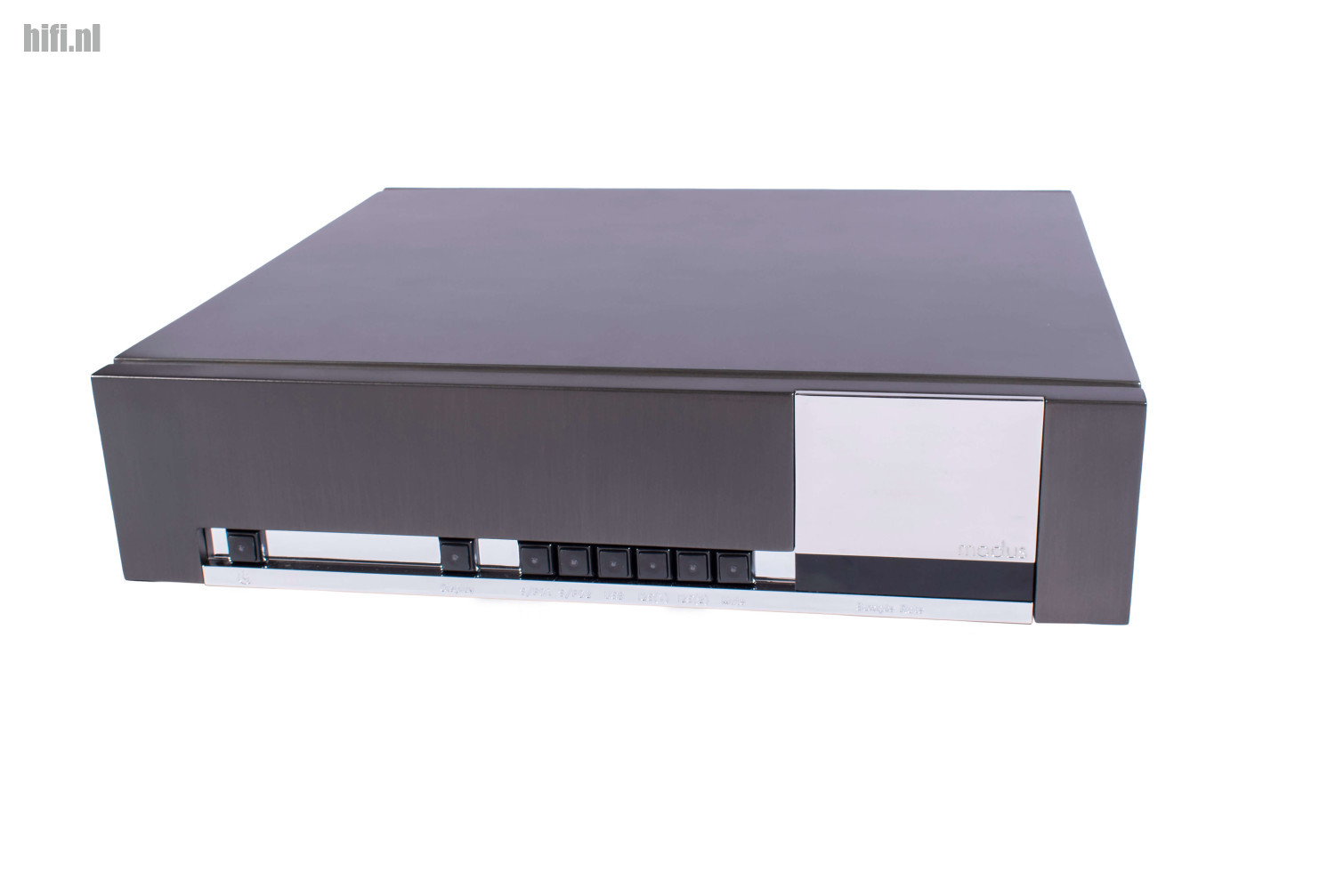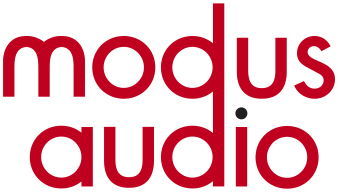
The question is not why analogue is better than digital, but why digital is lagging behind analogue. It won't happen very often that consumers hear analogue sound at its very best. In fact, the same is true of digital. You have to work hard to optimise both, but then analogue takes the lead.
We don't yet know exactly why our hearing experiences digital as less natural. There is a lot of research going on into that. Two parties to that are Modus and Pink Faun. Modus has made steps with the introduction of the Modus DAC1. This new converter is the subject of this review. | Voor Nederlands, klik hier
At the end of the year, it is time for reflections and a critical evaluation regarding achievements, missed goals and newly acquired insights. Enough discussion material for a private chat with your therapist. It has become clear that any audio component with a 'character of its own' is best ignored. You don't want to hear components and cables, but only the ambience, tonality and further characteristics of the recording. A challenge for the past year 2023 was to strive for an even more natural soundstage. Away from the typical hi-fi sound with sizzling highs, pounding lows and a boosted tonality that instruments never display in a live situation. The challenge was how to build a digital system that sounds natural, realistic and engaging.
Clearly, there are always small improvements in digital playback, but there is still a difference from analogue at top level. At the beginning of 2023, a chance to listen to what is considered one of the best turntables in the world presented itself, as well as an opportunity to take a listen to analogue master tapes. Both offered a shocking experience and it taught that digital is getting close, but there are still steps to be made.

Manufacturers have their own opinions on this topic. That is good. Everyone is working on a piece of the puzzle. Most dacs of any serious quality do not differ very much in sound quality. Each manufacturer finds specific sensitivities in that whole process of conversion, which are then worked on with the result that the bar is raised yet another notch. This applies to converters but also to digital sources.
Yours truly recently spoke to the chief designer of a well-known Japanese brand that builds music servers. They use normal hard drives for data storage. According to this manufacturer, SSDs follow a complex process while reading and writing and this negatively affects sound quality.
Pink Faun
Pink Faun builds the famous 2.16 Ultra music server/streamer. A music server is basically just a computer. Jord (Pink Faun) indicated that many manufacturers use a standard motherboard and power supply and mainly focus on a good usb interface and some measures to suppress EMI and RFI. Pink Faun also focuses on that motherboard in particular. They use one where almost all functions have adjustable parameters. You then have influence on timing processes and buffers, for example, and these affect sound quality.
Pink Faun also applies a linear power supply, has in-house designed highly advanced usb and I2S interface cards, and they have the most accurate and stable clock imaginable. This Pink Faun Ultra OCXO Clock has an extremely low phase noise. The signal also goes out immediately. Many clocks need a multiplier to reach the desired frequency. This in turn creates extra noise. Instead of damping resonances, the motherboard is on a chassis that has no resonances (honeycomb platform).
The power supply is linear and has star grounding and star feeding. This gives extremely low noise and fast transients. Attention has been given to the BIOS settings. These affect sound quality. Audio from streaming services and internal storage enters RAM and is played from there. This is better soundwise than playback from buffers. Pink Faun's ultimate goal is to make digital sound more analogue.
Modus Audio
With the release of Modus' long-awaited dac, it becomes clear what approach this company is pursuing. Richard Boumans, the engineer behind the Modus products, also follows a clear direction in this. The Modus dac works with a maximum sample rate of 192 kHz pcm at 24-bit. No dsd is available.

Higher rates have no auditory advantage, according to Modus. Rather, they work in the opposite direction.The processors and further necessary technology have to process larger amounts of data at higher clock speeds. The high-frequency disturbances can then affect within the processing of the low-frequency audio signals. That is where Richard has a point. The enormous quality of modern Red Book CDs and better digital technology already mean that the difference with hi-res recordings can only be perceived by practised listeners with very good equipment. Incidentally, there is a difference between using very high resolutions during recording, editing and mastering and the moment you play back digitally at home. During production there are advantages and during playback at home there are disadvantages.
Notable chip choice
Mode uses the Texas Instruments PCM1794 as its converter chip. This is considered very strong sonically and has the advantage that no extra chip is needed to drive the converter. The harmonic distortion is similar to that of the popular ESS line, but the IMD (intermodulation distortion) is much lower.
As Hans van Maanen and Hideki Kato, among others, point out, it is not about a rat race in static specifications on the amplitude axis. What happens in the time domain is much more important. For instance, it may happen that a slightly older PCM1794 can perform better sonically than more modern dac chips. The average audiophile associates sound quality mainly with more expensive, modern, heavier and more bells and whistles. Your author can provide a whole list of equipment that is vintage, affordable at the time, without apps, displays and wireless communication, extremely solidly built and sound heavily competitive with many modern devices.
Bells and whistles
The Modus DAC1 is not wireless, has no touch screen and does not work with an app. Just a row of decent physical buttons for standby and digital source selection. Maybe not sexy and not powerplay and window-dressing you can trounce your neighbours with. Just remember that many devices with wireless technology, apps and touchscreens will have become unusable in five years' time.

The manufacturer then no longer provides software updates, the new generation of smartphones is no longer compatible, there are new standards for wireless communication and important spare parts are no longer available. Last year, this was regularly covered in the press. Anyone with a smarthome quickly encounters this obsolescence. If it still works then, all that software often no longer meets modern security requirements. Devices that are inherently simply built, such as the Modus dac, have a longer foreseeable lifespan. Some modern devices, such as music servers, streamers and some dacs, rely on software. Many other audio devices do not necessarily need software.
Modus dac
Modus has its own approach to building electronics. The various building blocks of the electronic circuit each have their own power supply. This always consists of the transformer, the smoothing, the rectification, the voltage stabilisation and the storage. In addition, Modus is fully committed to reducing EMI and RFI. It explains the hefty weight of these Modus devices and is also inspiring. Your author applied some of those techniques while developing active filters last year. For the fun of it.
The Modus dac offers two s/pdif inputs (coax), two s/pdif inputs via BNC, two times I2S (hdmi) and usb. I2S is not standardised. So it may not work with certain servers, streamers or drive units. With the Pink Faun 2.16 Ultra, it is no problem. As we know from Modus, the dac's visual design and build quality are top-notch: the brand could have a brand store in the capital's P.C. Hooftstraat.
Preparation
Miscellaneous converters are available in the various listening rooms. In practice, most of them offer very good performance, although there are slight differences if you start paying attention to specific features. In the studio here, purely professional converters are also used. These then often offer features that consumers do not need, such as the ability to choose different network protocols and the presence of a routing matrix. Apart from that, the sound quality is often extremely good and sometimes goes a bit further than that of so-called audiophile converters.
To get an impression of the Modus dac, it was initially connected within one of the studio's reference sound systems. That system sounds neutral and quite realistic. This made it possible to very accurately experience the differences in sound quality between dacs. In fact, the Modus replaced some existing dacs, so you can hear the differences quite clearly.

Listen to music
It is not the intention to start comparing the Modus with various other dacs (by name) and then shout about every sound characteristic comparatively. As already noted, all these dacs perform at a high level, but show minor differences in features. The question is rather to what extent a dac can present a realistic, natural, engaged and as analogue soundstage as possible, where of course notable features may still be mentioned quite individually. At the end of the day, if all goes well, you are listening to music and not to the height of the intermodulation distortion and phase angle at 18,000 Hz. To provide the Modus dac with the best signal, the Pink Faun 2.16 Ultra server/streamer was connected and a disk drive with a famous TEAC CD drive. In this case, the Pink Faun only delivered hi-res content from the built-in storage. So no streaming, although the 2.16 can do that. This Pink Faun works with its own application.
Software-wise, applications are usually composed of several 'layers'. The layer that communicates with the user (user interface) often communicates internally with an API (application programming interface) underneath. Pink Faun's own Stylus application stack has one less layer than the Roon stack. The less software, the better a system sounds. In general, it is worth noting that audio equipment and software are not the most beneficial combination. Audio companies often lack the experience to write good software. Apart from a few exceptions, it is better to leave that to the IT industry.
Second production unit
The second setting was built in one of the listening rooms. There, the new, long-awaited Modus dac complemented the Modus SPR01 preamplifier and SPA01 power amplifier present. Both in extremely chic high- gloss black piano lacquer. Combined very well with the Christmas decorations present. Finding the right match was not difficult, as the Modus devices are obviously already a good match.
A taste of the dac's performance could be found at the past DAE (Dutch Audio Event), where the boys from PUUR (Dutch retailer) gave a not undeserving demonstration of the Modus stack, using the Pink Faun server through new Goldmund speakers. Within the constraints offered by any audio show, it sounded natural and certainly not hi-fi. The first and second settings always used the Pink Faun 2.16 Ultra and the TEAC tape deck.
Listening
"The source is the most important thing." A famous saying from suppliers of CD players, servers and turntables. Those who sell speakers think they are the most important. Marketing often seems driven by misunderstanding and ignorance. The experience here is that an audio system is a chain. Literally every screw is important. At Pink Faun and Modus, they understand this. Every component has been thought through and there is a motivation behind every design detail.

What stands out while listening to the Modus dac, in its various configurations and systems, can be captured in a few general features that, in your author's humble experience, go just a few notches further than many other dacs. The sound has a certain power and energy. Focusing is really extremely good. Voices and sounds are depicted razor-sharp in their own space, but without losing integration.
The stage is huge and has depth in horizontal layers. The reproduction of details and ambience is striking. These do not manifest themselves in the form of a detached layer, caused by high-lift through cables or otherwise. It is fully integrated, coherent and natural. As you experience it in reality. The sound is unprecedentedly clean with tremendous dynamics. Also striking is the integration between low, mid and high.
These frequency ranges do not manifest themselves as separately perceivable entities, as is often characteristic of hi-fi reproduction. Together with the striking quality of the bass reproduction, there is a very contrasting picture. That total causes an enormous involvement and 'I'm there' sensation. Needless to go into screens with all kinds of music clips, but play Jimmy Smith with Tuition Blues and you experience a total freak out. The steps taken by Modus and Pink Faun definitely contribute to a more intense and analogue experience.
Analogue
The challenge for digital sound is to sound more realistic, natural and 'analogue'. Designers are trying to move digital in that direction. It is then necessary to define what is meant by analogue sound. In the perception of many audiophiles, terms like warm, low dynamics and low detail then emerge.
Terms like warm-sounding tubes and warm-sounding records cannot be whipped out of the collective consciousness, and many audiophiles indicate that these are necessary ingredients to be emotionally moved by music playback. What you are then effectively saying is that emotions arise from listening to flat distortion. That is possible, but they are not the emotions meant here.
Emotion comes from music
In your reviewer's humble experience, emotion arises while listening to music as a result of the harmonic, tonal and sequential construction of a composition. The power of harmony, counterpoint, combinations of sounds, melody line, the imaginative elaboration of patterns, the cadenza, phrasing, tonality, rhythm, disharmony, tempi, combination of instruments, interpretation and performance.
Beethoven excelled at introducing totally unexpected elements into a composition. There is a surprising power in all these features that penetrates deeply at the intellectual level, but also to the emotional layers. That works even when listening to a simple car radio, a 78-rpm gramophone or a child with a violin. In the end, what kind of music lover are you if you can only enjoy music with a six-hundred thousand audio system? Although that can be nice.
So analogue sound here stands for natural and realistic sound. As we simply experience it around us. Do the systems from Modus and Pink Faun come close to that? In a way. Digital is getting better and better, and it must be admitted that the Pink Faun 2.16 Ultra is currently among the most analogue-sounding servers known to your author. Again, the Modus dac has further contributed to this. That is placed here in the light of experiences gained last year with master tapes and with vinyl playback at an unprecedented level. Those experiences, too, call for a slightly relatable consideration. Just listen to the amazing Modus/Pink Faun combo. to the super turntable in question or to a master tape. Step onto the studio floor immediately afterwards and listen to a string quartet. Then you'll know exactly what distance remains from reality. But, with some audio systems you'll get quite closer. In any case, the following may be noted: with Modus, the world is a bit more analogue again.
Synergy
There is still something to be said about the complete assembled system, of course. The Modus stack with Pink Faun server, speakers, cables and acoustics. The best possible match was achieved with these. The box of tricks has been fully unleashed on this. A piece of synergy is then created. The complete system is much more than the sum of its parts. That's what you want as a tuner of audio systems. It is also a kind of Olympic challenge to achieve a superior level of performance. The ultimate thrill you can get as a reviewer. In absolute terms, this system comes with a wall of convincingly defined sound within a bizarrely spacious stage with an analogue richness of sound coming from voices and instruments. A hugely plastic, high-contrast and grippy reproduction with considerable drive and energy. It's pretty close to realism. At least an extremely convincing illusion of realism.
One difference is that live sound often has an even higher level of energy. Ever heard four trombones go wild for a while? In any case, the system sounds fascinating. Not a shred of sharpness, the most natural sound possible and far removed from such a beefed-up hi-fi sound. Within the framework of the applied reproducers and acoustics, nothing that leaves anything to be desired. You would want to experience such an appealing and engaged reproduction every day. In audio land, development is evolutionary. Modus and Pink Faun have taken small and meaningful steps in this. When you sweep all that together, what you have is a system with, in absolute terms, a spectacular level of performance. You would want to let everyone hear this soundstage. Simply to calibrate and to be able to build up a frame of reference of what is possible with good equipment. The Pink Faun 2.16 Ultra belongs to the top of the very best servers and the new Modus dac to the top in converters.
Modus DAC1 | 24,500 euros | modusaudio.com | www.pinkfaun.com





